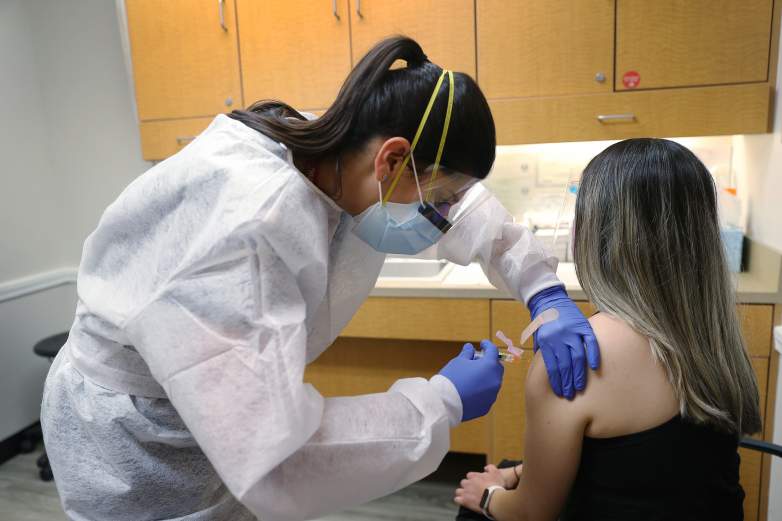
Even though coronavirus and influenza are two different types of viruses, they spread pretty much the same. That’s why efforts to slow the spread of COVID-19 could also work to slow the spread of the flu, and according to the Centers for Disease Control, they’re already seeing a less severe flu season in the southern hemisphere and so far in the U.S.
Australia, South America, and South Africa see the worst of their flu season from June to August, so they act as a bellwether for countries in the northern hemisphere regarding the severity of an upcoming flu season. The CDC said those countries are seeing “very low influenza activity” this summer.
What’s more, the CDC is also reporting that in the US, since “widespread adoption of community mitigation measures to reduce transmission” of COVID-19, positive flu tests have decreased from 20% to 2.3% and “has remained at historically low interseasonal levels.”
Dr. Michael Teng, a virologist and associate professor of internal medicine at the University of South Florida, told Heavy that he agrees that efforts to slow the spread of COVID-19 could also help mitigate the spread of the flu, but pointed out that many are not doing all they can to stop the spread of coronavirus.
“Everything we are doing for the coronavirus is also something that will be useful to prevent transmission of the flu — hand sanitation, wearing masks, physical distancing, things like that,” Teng said. “I think the problem is that we’re not doing that great of a job at doing all the public health matters that we should be doing.”
The CDC Says Places Where ‘Extensive Mitigation Measures’ Exist May See Very Little Flu This Year

GettyPeople wearing protective masks walk their bicycles past a social distancing sign reading “KEEP THIS FAR APART” at Jacqueline Kennedy Onassis Reservoir in Central Park during the coronavirus pandemic on May 17, 2020 in New York City.
The ways the CDC says are best to keep from spreading or catching the flu may sound familiar: Wash your hands often; don’t touch your eyes, nose or mouth; stay home if you’re sick; avoid close contact with others; cover your mouth and nose when sneezing or coughing.
Those measures are well-established to help prevent the spread of certain infectious diseases, even though prior to the pandemic most people gave them less thought on a regular basis than they do now.
With the implementation of mitigation ordinances, and the choices of some to heed the precautions coming from the medical and scientific communities, the CDC says, “in countries or jurisdictions where extensive community mitigation measures are maintained (e.g., face masks, social distancing, school closures, and teleworking), those locations might have little influenza circulation during the upcoming 2020–21 Northern Hemisphere influenza season.”
The other thing that can help keep the severity of flu season down is the flu vaccine. And unlike in the case of COVID-19, there are established and FDA approved means of treatment for influenza, such as Tamiflu. The flu is an old adversary.
Coronavirus is lesser-known and has no established medicines nor a vaccine yet. Scientists, researchers, and doctors are learning about the virus in real-time so how a person may handle being infected by both viruses at once is not completely understood.
Since Much Is Still Unknown About Coronavirus & How Diligent People Will be About Mitigation Measures, Medical Experts Still Say Get the Flu Shot to be on the Safe Side

GettyEnbal Sabag, a Nurse Practitioner, wears personal protection equipment as she administers a flu vaccination to Noel Janzen at the CVS pharmacy and MinuteClinic on September 03, 2020 in Key Biscayne, Florida. Flu shots are available at the nearly 10,000 CVS pharmacies and approximately 100 MinuteClinic locations across the country. Heath experts say getting the flu shot this year is important because the dangers of having COVID-19 and the flu simultaneously are still unknown.
Because of the “uncertainty of continued community mitigation measure” and the limited understanding of the coronavirus, the CDC still says, “it is important to plan for seasonal influenza circulation in the United States this fall and winter,” recommending that people still get their flu shot. They say it “remains the best method for influenza prevention and is especially important this season when SARS-CoV-2 and influenza virus might cocirculate.”
Dr. Teng agrees. He says it’s important to avoid the flu because having both viruses at the same time could be awful.
“First off, the symptoms are really hard to distinguish,” Teng said. “And the second part is the potential for them to interact. So if you get infected with both of them at the same time things might get much worse because your body would be trying to fight two infections at the same time.”
Teng says there are a few reasons to get the flu shot even though it’s not 100% effective.
“The flu vaccine — it’s not 100% effective but it’s 50-60% effective,” he says. “So if you get the flu shot the likelihood is you won’t get infected or even if you do get infected the disease would be milder. So first off it’s kind of protecting you. Second off, because you don’t have those severe flu symptoms that look a lot like the severe coronavirus symptoms you won’t be overburdening the health care system with testing and all that stuff. And then the third part is if we block transmission of flu better then we won’t have the potential damage of the severe infections, co-infections, with flu and the coronavirus at the same time.”
READ NEXT: ‘I Think I Killed my Child’: Orlando Woman Pulled Naked From Lake